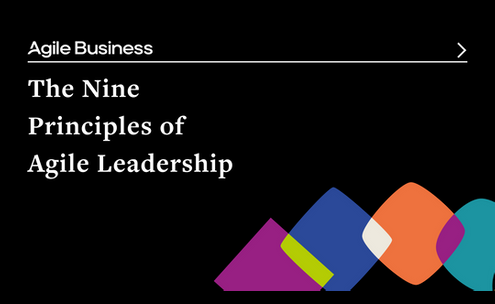Principle 5: Emotion is a foundation to enhanced creativity and innovation
Emotion; emotional intelligence; motivation; creativity
Agile Leaders inspire others to bring their best selves to their work. They understand that emotion is an important part of the human experience and when individuals work with their emotions, they achieve more of their potential. Innovation and creativity rely heavily on respect that the Agile Leader encourages by being accessible, open, honest and transparent whilst expecting the same from others.
Innovation happens best when we reduce our fears and ego defensiveness, thereby freeing our minds to imagine, create, connect, and explore the new and unknown with others in a non-competitive way. That happens best when people feel psychologically safe and trust each other. It is all about emotions1
However, there is a myth that says emotions should be left at home. Would that be helpful to organisational life? Would the Agile Leader choose to ask people to come to work without excitement, joy or enthusiasm?
Creativity at work
Creativity is increasingly seen as vital to competitive advantage. Leaders are under growing pressure to generate creative output. People’s moods and emotions influence several critical elements in organisations, from creativity to performance, to collaboration and decision making.
A recent study has shown that positive moods help with creative tasks and are likely to lead to more receptive, big picture thinking.2
Empathetic, emotionally intelligent work environments have a good track record of increasing creativity, improving problem solving and raising productivity3
However a balance needs to be struck. Positive emotions encourage open-mindedness and flexibility and so help generate more creative solutions, connections with others and help focus on achieving goals. Neutral or slightly negative emotions do have their place - they narrow the attention and help detect mistakes, assess risks and evaluate plans, resulting in more careful and better quality arguments.
Just leave the negative emotions at home
On the other hand, highly negative emotions such as anger, frustration, sadness or fear are considered unhelpful in a working environment. It’s easy to confuse “emotion” with “emotional”. Emotional is usually a term reserved for those people who easily express a range of emotions in public or those who are considered enthusiastic-overreactors4; in these terms, emotional behaviour is not helpful in workplace situations.
When faced with someone else’s negative emotions, some people will tend to change their own emotional state, quite often to a state that mirrors the other: frustration rewarded with more frustration, anger with anger, sadness with sadness and so on. Others may find these uncomfortable emotions too difficult to deal with and will move away from their source, either by literally walking away or by withdrawing emotionally in order to protect themselves. It is easy to see why people are asked to leave their emotions at home, emotions appear to be the cause of the “bad stuff” that happens in the workplace.
Removing barriers to creativity
Research has shown a number of environmental factors that block creativity; these include criticising new ideas, political problems within the organisation, an emphasis on the status quo, a conservative low risk attitude among top management and excessive time pressure4.
People are most creative when they feel motivated primarily by the interest, enjoyment, satisfaction, and challenge of the work itself
The Agile Leader has a responsibility to remove those blockages to creativity, to encourage motivation and to ensure an environment that is safe for teams to thrive.
The role of the agile leader
Positive emotions will spread organically throughout organisations, amongst team members and to customers; encouraging positive emotions will help individuals contribute more creatively to the effectiveness of their organisation.
The role of the Agile Leader is to balance support for new and creative ideas whilst managing risk in a way that doesn’t affect the stability of the organisation – critically though they have to remain open continuously to the possibilities that enhanced creativity and innovation can bring.
Sources
- Research report impact of emotions on creativity - langleygroup.com.au/work/research-report-impact-of-emotions-on-creativity
- Here’s Why Emotions are the Secret Sauce of Innovation - Ed Hess , Forbes, January 2017
- Emotional Intelligence: Why It Can Matter More Than IQ - Daniel Goleman
- Personality Adaptations - Joines, V. and Stewart, I. (2002), Lifespace Publishing, Kegworth
Author

Agile Business Consortium
The Agile Business Consortium is the professional body for business agility. We’re all about community – whether you’re a multinational working through a large-scale transformation, a new start-up, or a contractor, we can support you to achieve more, to grow more, and to build your business agility. As a global not-for-profit organisation that’s been around for over 25 years, our knowledge and experience around agile competencies and behaviours can offer you the guidance you need to reach your agility goals. Together with our partners, we create and share agile research, case studies, resources and tools that help you compete in today’s uncertain world. A registered not-for-profit, we’re the world’s longest-standing agile-orientated organisation. We’re the brains behind AgilePM®, AgileBA®, AgilePgM®, AgilePfM™ and AgileDS™. Based in the UK, we have members in over 30 countries around the world.
Email: [email protected]
- Twitter:
- @Agile_Biz
- Website:
- www.agilebusiness.org
- LinkedIn:
- https://linkedin.com/company/agile-business-consortium


